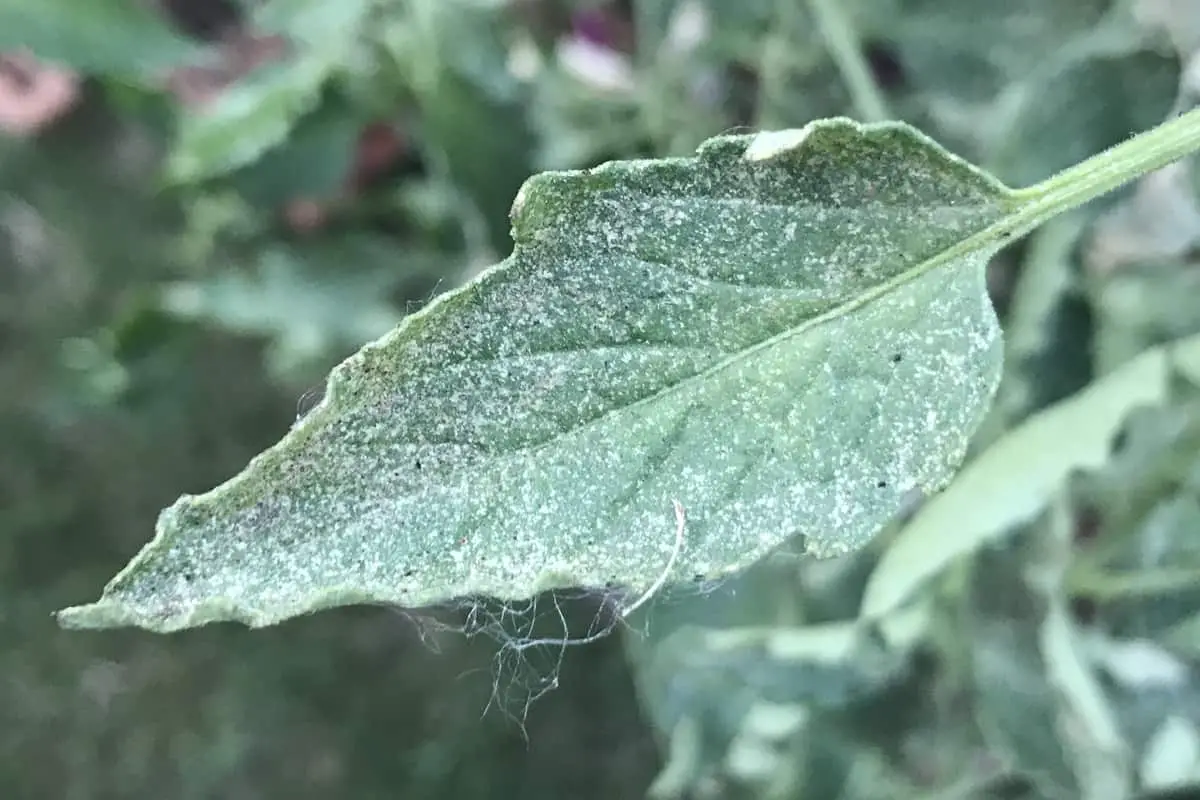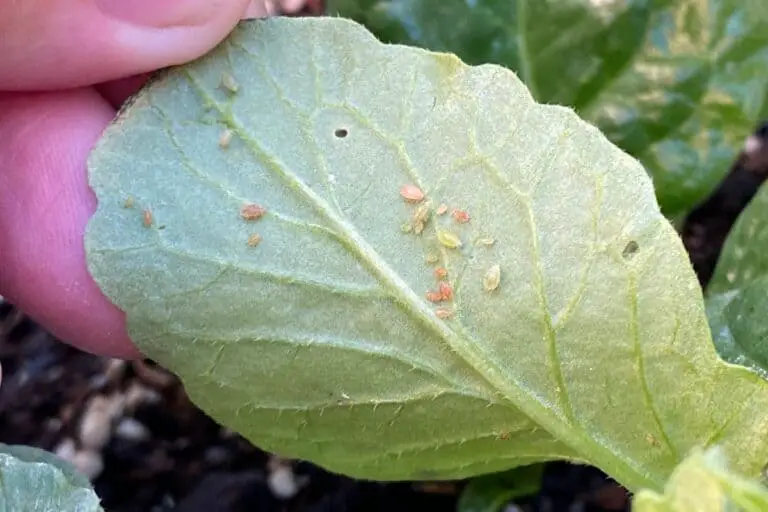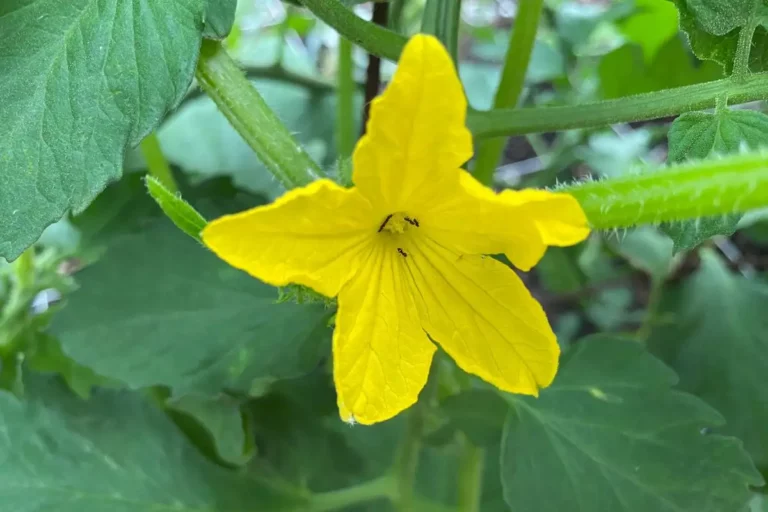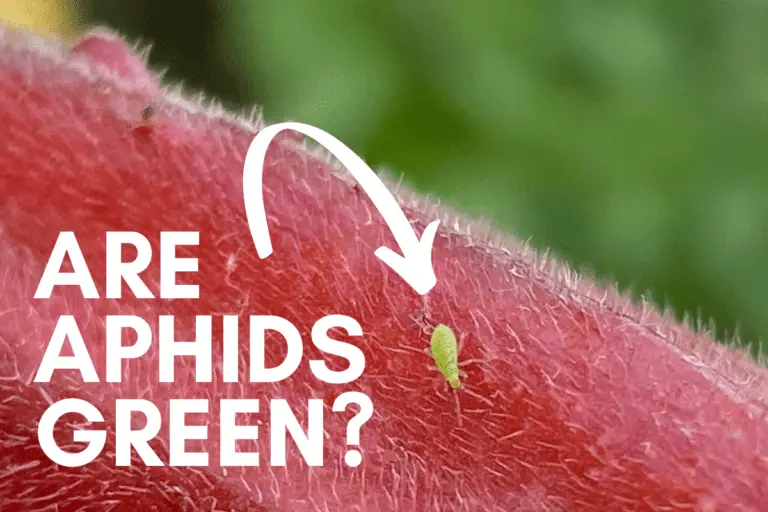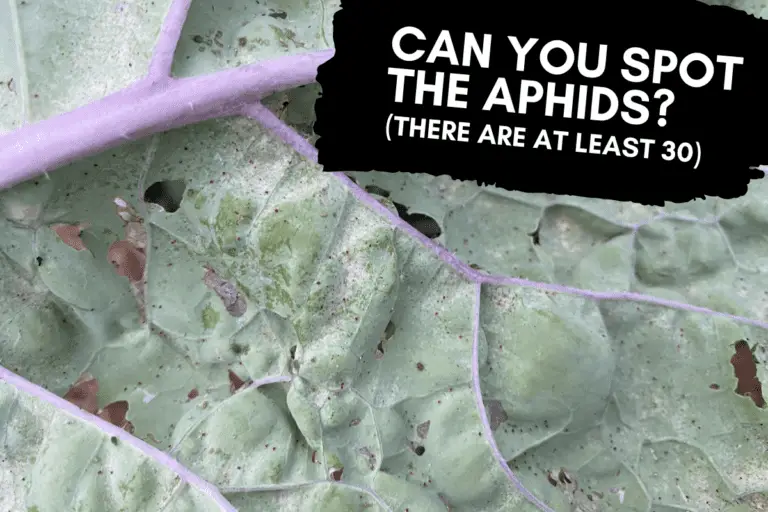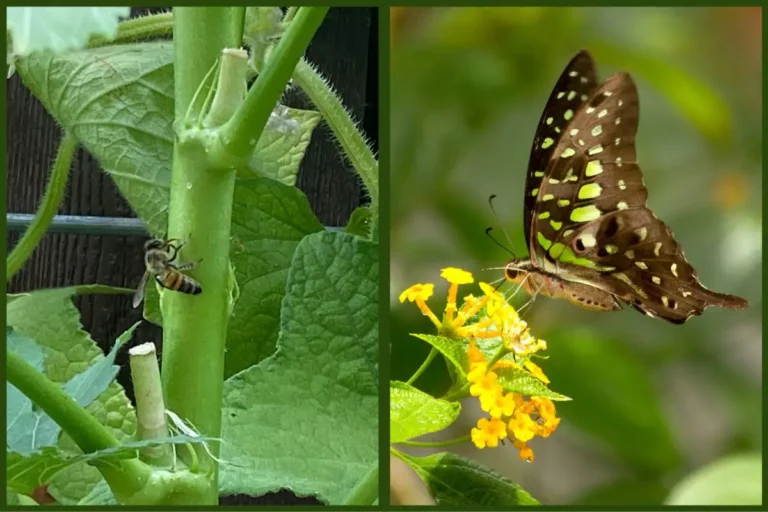Where Do Spider Mites Come From? What Science Has to Say
One of the most disappointing gardening experiences I’ve ever had involved spider mites.
Many years ago, I had a beautiful spring garden and was particularly proud of my many tomato plants. But I was a novice gardener and didn’t recognize the early signs of spider mite infestation. By the time I realized I had a problem, the spider mites had practically taken over, and within just a few months, most of my tomato plants were either dead or dying.
I remember how frustrating and confusing the whole experience was as I looked at my spider-mite-infested garden and wondered: Where did these pests come from?
What I learned from my research was both helpful and a little alarming, so I’ll provide both a quick synopsis as well as more detailed information for those who want to understand how to delay or stop the spread of spider mites
Spider mites are migratory pests who travel via both surface-to-surface and airborne transmission. They are adept at clinging to objects and hiding in plant foliage, and they spin thin, wispy webs that can be blown about by the wind, making long-distance travel possible on windy days.
When I finally realized that I had a spider mite infestation on my hands, I did what most people do and turned to the internet for help. But I wasn’t impressed with what I found on other sites.
Lucky for me, I work at a university, so I had access to the library’s books and scientific journals. And since I’m a bit of a nerd (if you haven’t noticed that already!), I decided to see what the science had to say about spider mites so that, in future years, I could stop them from destroying my plants.
Where Do Spider Mites Come From?
Let’s start with some big-picture facts about spider mites before getting into the specifics of how they’ll actually arrive in your garden or home.
First, spider mites are not spiders. They are more closely related to ticks. Second, spider mites are a global pest. They can be found on every continent and thrive in both temperate and warmer climates.
Unfortunately, they are also able to withstand colder temperatures and can thus overwinter in many parts of the world during the coldest times of the year. This ability to adapt has allowed them to travel widely across both tropical and temperate zones.
In the United States, the most well-known spider mite is Tetranychus urticae, which is commonly referred to as both the two-spotted or red spider mite due to its distinct coloration and is one of 148 members of the Tetranychus genus. T. urticae was first discovered in Germany in 1836 by the famous entomologist Carl Ludwig Koch, which is why scientists will often refer to two-spotted spider mites as “Tetranychus urticae Koch.”1 T. urticae are believed to have originated in Germany, but it’s impossible to say exactly where or when they first showed up.
A more recent, and thus less well-known, invasive spider mite goes by the scientific name Tetranychus avensi and is commonly referred to as a red spider mite or a tomato red spider mite due its dark red hues and the damage it wreaks on tomato crops. Unlike its cousin T. urticae, T. avensi was first discovered in Brazil in 1952, but it, too, can now be found in 40+ countries across the world.2 It migrated to the United States as early as 1956 and was seen in Australia for the first time as late as 2013.3
How Do Spider Mites Spread?
Unfortunately for gardeners, spider mites are very small, typically .1mm to .5mm, and they can migrate quickly via infested plants, the wind, clothing and shoes, garden tools, skin, and irrigation water.
Unless you’re a trained entomologist, you’ll never know which kind of spider mites have infested your plants, and frankly, it doesn’t really matter. What’s important is that you understand how they spread and how to effectively fight off an infestation.
Previously infested plants are likely one of the primary causes of spider mites’ worldwide spread. Due to spider mites’ small size and the challenges involved in recognizing early infestations, they’re able to travel incognito, often concealing themselves on the undersides of leaves. Once an infested plant is placed within the vicinity of other plants, spider mites can easily travel between plants before anyone notices the damage they’re inflicting.
Wind-borne dispersion is another way that spider mites travel from one location to another. As spider mites infest a plant, two things occur. First, spider mites are prolific reproducers, and absent treatment, their numbers will grow quickly, which will lead to general overcrowding. Second, as overcrowding takes place and spider mites drain the plant of its sap, they begin to compete with each for the remaining food.
As researchers have shown, under these conditions, spider mites make preparations to migrate to new plants so that they can continue to feed and reproduce. To do so, they spin thicker, silky webbed balls around the plants’ peripheral leaves and branches as they attempt to travel to healthier nearby plants, which makes windborne dispersal possible. In fact, spider mites have been shown to travel extensively on windy days, not just to plants in their general vicinity but to others that are as far as 300 yards away!4
Much like their tick cousins, spider mites have the ability to cling to all kinds of surfaces, which means that they can travel on clothing, shoes, and even skin. Shared tools are a problem because spider mites can migrate by clinging to the tools or even hiding in clumps of dirt as they are transported to a new location. And both farm workers and gardeners can easily transport them from one site to the next due to their small size.
Can Spider Mites Survive Cold Weather?
Weather plays an important role in the spread of spider mites, both aiding their dispersion in certain regions while halting their advances in others.
Spider mites thrive in various climates, as seen in how quickly they’ve spread across the world. However, certain climates are more hospitable than others, which is why T. urticae has been especially prolific in the Mediterranean while T. evansi has decimated tomato crops in southeast Africa. Both types are prevalent in the United States, albeit less so in the northernmost regions of the country.
What the global distribution of spider mites suggests–and what researchers have shown to be true–is that both T. urticae and T. evansi are chill tolerant pests. They can’t withstand the lengthy freezes that take place throughout Canada, Alaska, the Nordic countries, and the northern regions of Russia, but they can tolerate cold temperatures just fine as well as short bouts of freezing weather.
Spider mites can withstand cold and frigid temperatures because of their natural ability to “diapause,” as scientists call it. What happens is this: When exposed to cold environmental conditions, such as temperatures below 50 degree Fahrenheit, the spider mites go into a hibernation-like state. They don’t spread under such conditions, but they don’t die either.
In fact, one study found that female spider mites might be able to diapause for well over 200 days at 40 degrees Fahrenheit, much longer than the average winter season in most countries. The researchers also discovered that spider mites could slowly acclimate to colder temperatures, developing an ability to survive in even harsher winter conditions.5
Practically speaking, this means that you can’t depend on winter weather to stop the spread of spider mites. As soon as temperatures warm up in early spring, it’s possible for previously diapaused spider mites to resume their normal activities.
If you notice a spider mite infestation in your spring garden and have no idea how it started, chances are you might be dealing with last year’s spider mites who simply overwintered among your winter garden’s vegetation.
Will Insecticides Kill Spider Mites?
Some authors suggest the use of insecticides, acaricides, or miticides for assistance in dealing with spider mite infestations, which can be especially problematic for greenhouse growers due to plant proximity and the ability of spider mites to thrive in slightly humid environments.
Unfortunately, spider mites have been shown to be highly adaptive pests, capable of developing resistance to many kinds of miticidal products. What makes matters worse is that both insecticides and miticides have been shown to kill spider mites’ natural predators, which means that although these products might show results in the short term, their continued use could lead to lasting long-term problems as predator populations decrease and spider mites develop further miticidal resistance.
Recent research has even suggested that predators can have intergenerational effects on spider mites. When predators are present, the scientists found, spider mites experienced prolonged developmental stages, the lifespans of female spider mites were shortened, and their ability to reproduce decreased.6 Those who rely on commercial-grade insecticides might want to consider the ways that these products can kill natural predators and thus unintentionally create more robust spider mite populations in years to come.
Are Spider Mites Everywhere?
As researchers have noted, global commerce is likely to blame for the fairly rapid spread of spider mites across the world, particularly T. avensi since its global spread has occurred in just a few decades. Unlike larger pests, which can be caught with proper quarantine procedures, spider mites are so small and prolific that they easily evade governmental restrictions.
In fact, scientists believe that spider mite colonizations in Europe, Africa, and Asia are the result of not one but many different infestation events. As global shipping has increased over the past few decades–and as spider mites have developed resistance to various insecticides, acaricides, and miticides–they have spread far and wide and have adapted to many different climates.7
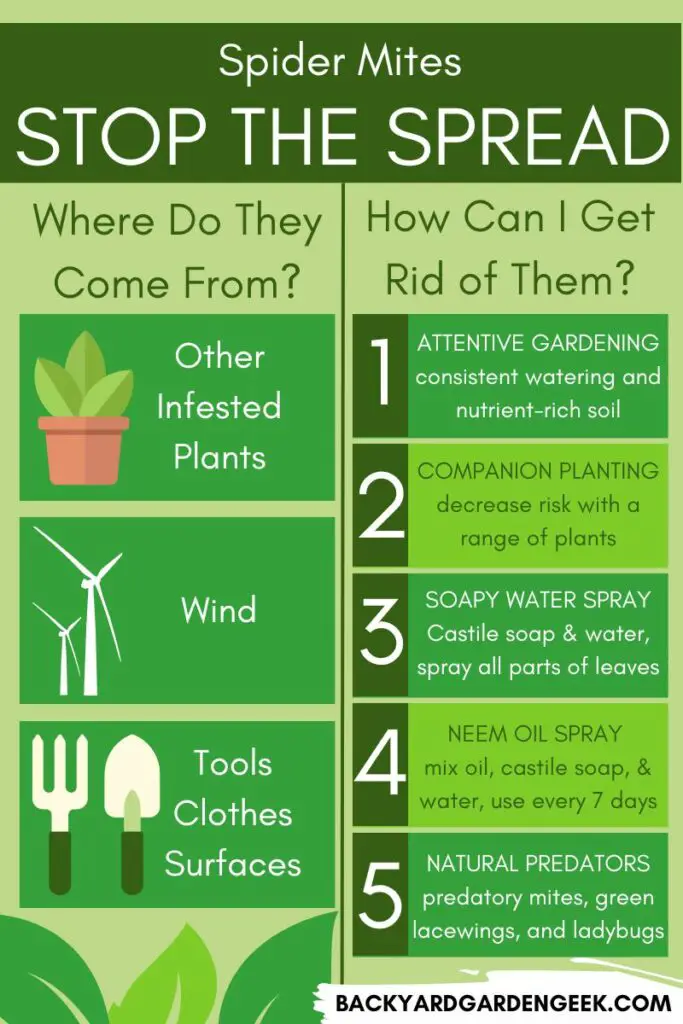
5 Ways to Hinder the Spread of Spider Mites
Let’s start off with an important point: Anyone who tells you that they have a foolproof way to stop spider mites from spreading isn’t aware of the science behind spider mite infestations. Spider mites are simply too small to stop their spread entirely.
However, there are certain precautions you can take to decrease the chance of spider mite spread as well as techniques to adopt if you notice signs of spider mite infestation.
Healthy Plants
As various researchers have shown, plants and herbivorous insects are involved in a constant “arms race” against each other.8
Plants wish to thrive by remaining free of herbivorous pests; the latter wish to thrive by feeding on their preferred plants. What’s happened over the ages is that plants across the world have developed various defense mechanisms to ward off pests, and the pests have responded in kind. Ensuring that your plants are as healthy as possible–which primarily involves cultivating nutrient-rich soil and practicing consistent watering–will give their natural defenses the best chance against a spider mite invasion.
Companion Planting
Although spider mites are prolific eaters, they prefer some plants more than other less-preferred varieties. If you plant dozens of the same plant within close proximity, you increase the chances of a garden-wide infestation since pests who thrive on that one plant will soon thrive on the others next to it. Companion planting allows you to spread out your risk.
This summer, spider mites invaded two tomato plants that I was growing next to each other, as well as some nearby black-eyed peas and marigolds (which I had planted as a decoy crop). But they left my pepper plants alone, and I didn’t find any trace of them on my cantaloupe plant.
Simply put, if you’re planting a range of plants in the same garden bed, you’ll decrease the risks associated with monoculture gardening.
Soapy Water Spray
With enough pressure, water can blow spider mites off your plants. If you have indoor plants with hardy foliage, you might place them in the shower and ensure that those spider mites get washed down the drain. But in general, I think that dousing plants in water is an ineffective way to combat spider mites.
On the other hand, soapy water sprays can be an effective deterrent but only if you’re able to thoroughly cover the undersides of your plant’s foliage. You’ll need a 1- or 2- gallon pump pressure sprayer and some soap. I’d recommend castille soaps like Dr. Bonner’s over Dawn or other dish soaps because their primary ingredient is typically some kind of vegetable oil (instead of animal lard).
Mix 1 tablespoon of soap per gallon and spray your plants thoroughly on both the topsides and undersides of the leaves. Do this in the early evening, especially during hot summers, once every 3 days depending on the nature of the infestation.
Neem Oil Spray
An organic neem oil spray is an even better method when it comes to spider mite infestations. I recommend the following mixture: 2 tablespoons neem oil plus 2 teaspoons castile soap per gallon of water. The soap is important since it acts as a mixing agent between the water and oil. Spray the plant thoroughly once every 7 days.
Don’t spray any oils on your plants during the morning or afternoon hours. Wait until the sun is starting to set, which will give the mixture plenty of time to dry and guarantee that your plants’ foliage won’t get burned by the summer heat.
Natural Predators
Spider mites have all kinds of natural predators–such as predatory mites, green lacewings, and ladybugs. Cultivating a healthy garden will encourage the arrival and success of these beneficial predators, but in a pinch, you can turn to commercial retailers for both ladybugs and predatory mites.
Some commonly available predatory mites include: Amblyseius andersoni, Amblyseius swirskii, Feltiella acarisuga, Galendromus occidentalis, Mesoseiulus longpipes, Phytoseiulus persimilis, and Stethorus punctillum. But be warned. Predatory mites are not cheap, and if you apply neem oil or other such sprays after you’ve introduced predatory mites into the garden, you’ll kill both the invasive spider mites and their predatory cousins.
I think a better solution is to cultivate a healthy garden and avoid the use of insecticides and miticides. That way, you’ll encourage the natural arrival of natural predators, which will help to mitigate the effects of spider mites.
As I noted above, spider mites travel far and wide with relative ease. They’re incredibly small, they reproduce prolifically, and they’re able to endure cold weather for relatively lengthy periods of time.
If you notice them in your garden, don’t blame yourself (as I did in my novice gardening days). It’s likely not even your fault since they could have arrived unnoticed in any number of ways.
You should instead take precautions to hinder or delay their spread, learn to recognize the early signs of spider mite infestations, and act quickly once you’ve confirmed that spider mites are on your plants. The more you know about spider mites, the more you’ll be able to help your plants recover and keep your garden free of these destructive little pests.
References
- Koch first published his findings in the book Deutschlands Crustaceen, Myriapoden und Arachniden. Ein Beitrag zur Deutschen Fauna (Regensberg: G. A. W. Herrich-Schäfer, 1835). For more information, see World Catalogue of the Spider Mite Family by H.R. Bolland, J. Gutierrez, and C.H.W. Flechtmann (Boston: Brill, 1998). See also this fact sheet published by researchers at the University of Florida.
- M. Navajas, G. J. de Moraes, P. Auger, A. Migeon. Review of the invasion of Tetranychus evansi: biology, colonization pathways, potential expansion and prospects for biological control. Experimental and Applied Acarology. February 2013, 59 (1-2): 43-65.
- See EPPO Bulletin, December 2013, 43 (3): 425-430. See also this Fact Sheet published by the government of South Australia in 2019.
- G. Azandémè-Hounmalon, S. Fellous, S. Kreiter, K.K.M. Fiaboe, S. Subramanian, M. Kungu, T. Martin. Dispersal Behavior of Tetranychus evansi and T. urticae on Tomato at Several Spatial Scales and Densities: Implications for Integrated Pest Management. April 2014, Plos One. See also Uesugi, R., Sasawaki, T., & Osakabe, M. Evidence of a high level of gene flow among apple trees in tetranychus urticae. Experimental & Applied Acarology. 2009, 49(4): 281-90.
- N. White, J. Bale, S. Hayward, Life-history changes in the cold tolerance of the two-spot spider mite Tetranychus urticae: applications in pest control and establishment risk assessment. Physiological Entomology. Dec. 2018, 48(4): 334-345.
- Li, GY., Zhang, ZQ. Development, lifespan and reproduction of spider mites exposed to predator-induced stress across generations. Biogerontology. 2019, 20: 871–882.
- A. Boubou, A. Migeon, G. K. Roderick, M. Navajas. Recent emergence and worldwide spread of the red tomato spider mite, tetranychus evansi: Genetic variation and multiple cryptic invasions: Recent emergence and multiple cryptic invasions of tetranychus evansi. Biological Invasions. 2011, 13 (1): 81-92.
- B. Knegt, T. Meijer, M. Kant, E. Kiers, M. Egas. Tetranychusevansi spider mite populations suppress tomato defenses to varying degrees. Ecology and Evolution. May 2020, 10 (10): 4375-4390.
